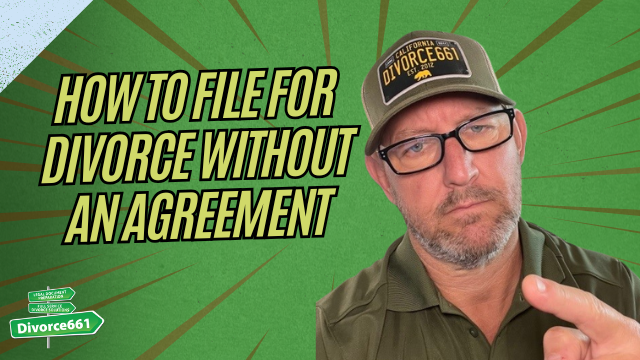How To Complete Divorce Petition FL-100 (2024 Forms)
Filing for divorce in California can feel overwhelming, especially when it comes to completing the necessary legal paperwork. If you’re preparing to fill out the FL-100 Divorce Petition form, it’s crucial to get it right the first time to avoid delays or rejections. This detailed guide breaks down the 2024 FL-100 form step-by-step, highlighting common mistakes and offering practical tips to help you file correctly and confidently.
Getting Started: Consistency Is Key
Before diving into the form, one critical point to remember is consistency—especially when it comes to names. Whatever name you use on the petition must be used exactly the same on every other document, including the summons and all subsequent paperwork. Variations such as adding a middle initial, using a maiden or hyphenated name inconsistently, can cause your petition to be rejected. If you’re using software to fill out your forms, this issue is less common since names auto-populate, but when filling out forms by hand or typing individually, double-check for exact matches.
Filling Out the Petition Form: Step-by-Step
1. Petition Type and Legal Relationship
Start by marking the appropriate box for your case type. Most cases—about 99%—are for dissolution of marriage. If you’re filing for legal separation or ending a domestic partnership, select those options accordingly, but never multiple at once. For example, if you were in a domestic partnership and later married, only mark “dissolution of marriage” on the petition, since that will also dissolve the domestic partnership.
2. Residency Requirements
One of you must have lived in California for at least six months and in the county where you’re filing for at least three months. Mark the box that applies to either you or your spouse—only one person needs to meet this requirement to proceed.
3. Dates: Marriage and Separation
Provide the date of marriage and date of separation. If you haven’t physically separated or don’t have a specific separation date, use the date you are filling out the form or an earlier date—never a future date. Also, include the length of the marriage in years and months. Many people skip this, but it’s important to complete these fields accurately.
4. Minor Children Information
If you have minor children, list their full names (using the same format consistently throughout all documents), dates of birth, and ages. You can add up to five children on the form; if you have more, use a continuation form. If you’re expecting a child during the divorce process, there’s a checkbox to indicate an unborn child as well.
Important: If any child was born before the marriage, you must check the box indicating a voluntary Declaration of Paternity has been signed. This is a legal document usually signed at the hospital, distinct from the birth certificate. If you don’t have this declaration, you can draft a stipulation with similar language accepted by the court.
5. Legal Grounds for Divorce
In California, the most common legal ground for divorce is “irreconcilable differences.” Mark this box and avoid selecting multiple legal grounds. If you are filing for legal separation instead of divorce, mark that box but still select irreconcilable differences.
6. Custody Requests
If you have minor children, do not skip this section. Here you request what type of custody you want, whether joint legal and physical custody or sole custody. Remember, these requests are not court orders but initial requests that can be modified later in a settlement agreement.
Pro tip: Joint custody does not necessarily mean a 50/50 timeshare. It simply means both parents have equal access and decision-making rights. For example, one parent might have 95% of the physical custody time, while the other has a smaller portion, but both share joint legal custody.
7. Child Support
Never mark the box saying you waive child support—this is not legally allowed. Child support is mandatory, and waiving it can lead to rejection of your petition. Leave this section blank or mark the appropriate boxes if requesting child support according to your situation.
8. Spousal Support (Alimony)
This section is for requesting spousal support at the time of filing. You can indicate whether support is payable to the petitioner or respondent, or if you want to terminate spousal support entirely (meaning no support now or in the future). If you don’t want support now but want the option in the future, mark that option accordingly.
9. Property and Debts
This is a common area where mistakes happen. Many people think they need to list every asset and debt on the petition itself, but this is not necessary and can be problematic. Including detailed lists with account numbers, vehicle information, and pension values makes this sensitive information public record, which is often unnecessary.
Instead, simply mark “none” if you don’t have separate or community property to report, or indicate that the parties intend to enter into a written agreement to address property division. If you have a lot of assets and debts, you can use a separate property declaration form, but be cautious about making it part of the public record.
Note: Separate property generally includes anything owned before the marriage or acquired after the date of separation. Community property includes assets and debts accumulated during the marriage.
10. Other Requests
- Attorney’s fees: In amicable divorces, this is usually not an issue and often left blank.
- Name change: If you want to restore your maiden name or any former name, state it clearly here.
- Other: Only use this box if none of the above apply, and write “none” to avoid rejection.
Final Tips for a Smooth Filing Process
- Always review your forms carefully before submitting to ensure consistency and completeness.
- Remember that the petition contains your requests, not final court orders. Settlement agreements can override initial requests.
- For amicable, cooperative divorces, you don’t need to attach parenting plans, holiday schedules, or other additional forms unless you want to.
- If you’re unsure about any section or anticipate complications, consider consulting a legal professional to avoid mistakes that could delay your case.
Conclusion
Completing the California Divorce Petition FL-100 form correctly is essential to avoid delays and ensure your case progresses smoothly. By following this step-by-step guide and paying close attention to details like name consistency, accurate dates, custody requests, and property declarations, you can confidently file your petition.
Remember, the goal is to keep the process as straightforward as possible, especially in amicable divorces. If you need additional help, resources such as free consultations or full-service divorce solutions are available to guide you through the process.
Filing for divorce is a significant step, but with the right information and preparation, you can navigate the paperwork with clarity and ease.


